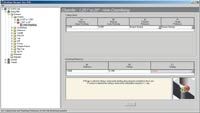A Better Process For Bases And Plates
In a mold shop, the model of the customer's part gets used in two parallel processes. One of these is core and cavity machining, in which CAM software generates complex tool paths to let CNC machining cut the shape of the part in metal.
Share






Autodesk, Inc.
Featured Content
View More
In a mold shop, the model of the customer’s part gets used in two parallel processes. One of these is core and cavity machining, in which CAM software generates complex tool paths to let CNC machining cut the shape of the part in metal.
The other process is base and plate machining. Here, the work is less likely to flow so smoothly. Mold design software may be used to model the bases and plates based on the core/cavity geometry, but the automation usually ends after that. If a model is imported into CAM software, a programmer likely will spend time selecting tools and machining operations for each individual feature. If the component is machined manually—as when a plate model is converted to a hole location chart—then the toolmaker performs this same selection but machines each feature as he goes. Either way, these components require mental labor and therefore impose a delay. This can seem ironic, given that the core and cavity are the components with the complex geometry.
But look closer, and the irony disappears. Cores and cavities are complex only in terms of geometry. Plates and bases are complex in a different way. While the tool paths to machine a plate may be simple indeed—just a series of hole-making plunges—the complexity comes in choosing the tools and operations. A plate with 100 or more holes might require dozens of center drills, drills, chamfers and taps in various combinations. Some holes will also call for a choice between drilling and helical milling.
In other words, the complexity of a plate lies in the knowledge necessary to machine it.
That’s why software to automate plate production needs to be knowledge-based.
An example of such software comes from Cornerstone Technology. The company’s newly introduced “Expert Mold Maker” recognizes the holes and pockets of bases and plates and automatically generates programs to machine these components based on rules the user can change.
Based in Windsor, Ontario, Cornerstone is best known to mold makers in the Detroit area. The knowledge-based software builds on an existing product called Expert Mold Designer, used chiefly among automotive mold makers to automate base and plate modeling. Where the existing software is strictly CAD, the new software sees the process through to postprocessed NC code.
To achieve the automatic programming, Cornerstone partnered with Pathtrace (Southfield, Michigan). Pathtrace incorporates feature recognition and knowledge-based machining into its own product, EdgeCAM. Similar algorithms allow the mold software to generate code from base and plate designs and allow users to revise the rules governing how various features are machined.
Most shops probably will change these rules. The shop that prefers to helical mill a class of hole that would usually be drilled, for example, can adjust the rules accordingly. In this way, the software captures a shop’s preferences and expertise.
Thus the software delivers several benefits. Chief among these are speed and precision. Programs are generated without delay and without the kind of error that can result from misreading a number on a hole chart.
But another benefit is the reduced dependence on skilled personnel. In a typical shop, how well or how quickly a plate is machined depends on which employee has that job. The knowledge-based software changes that. It also lets the shop worry less about the prospect that a skilled toolmaker might retire or might leave the shop and take his knowledge away.
Related Content
The Power of Practical Demonstrations and Projects
Practical work has served Bridgerland Technical College both in preparing its current students for manufacturing jobs and in appealing to new generations of potential machinists.
Read MoreCan ChatGPT Create Usable G-Code Programs?
Since its debut in late 2022, ChatGPT has been used in many situations, from writing stories to writing code, including G-code. But is it useful to shops? We asked a CAM expert for his thoughts.
Read MoreOrthopedic Event Discusses Manufacturing Strategies
At the seminar, representatives from multiple companies discussed strategies for making orthopedic devices accurately and efficiently.
Read MoreGenerating a Digital Twin in the CNC
New control technology captures critical data about a machining process and uses it to create a 3D graphical representation of the finished workpiece. This new type of digital twin helps relate machining results to machine performance, leading to better decisions on the shop floor.
Read MoreRead Next
Building Out a Foundation for Student Machinists
Autodesk and Haas have teamed up to produce an introductory course for students that covers the basics of CAD, CAM and CNC while providing them with a portfolio part.
Read MoreSetting Up the Building Blocks for a Digital Factory
Woodward Inc. spent over a year developing an API to connect machines to its digital factory. Caron Engineering’s MiConnect has cut most of this process while also granting the shop greater access to machine information.
Read More5 Rules of Thumb for Buying CNC Machine Tools
Use these tips to carefully plan your machine tool purchases and to avoid regretting your decision later.
Read More








































.jpg;maxWidth=300;quality=90)







